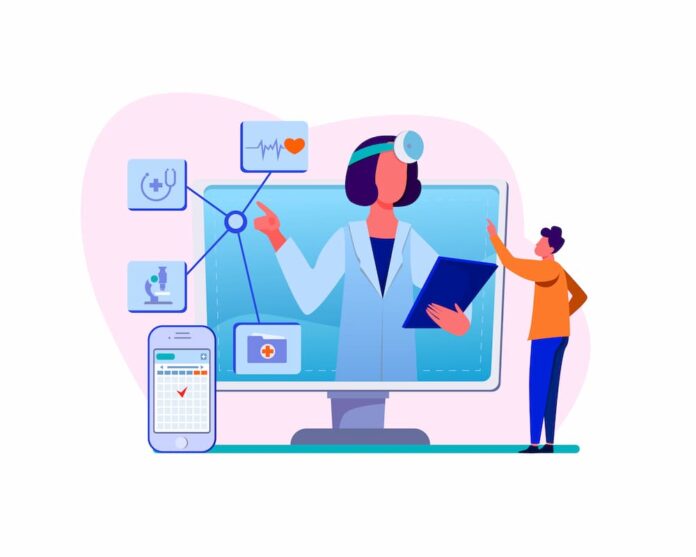There is a huge difference between the Pre-Covid age and the Post-Covid age, which seems strongly apparent in multiple industries and sectors around the world, the economic changes have urged the acceleration of the digital transformation in all industries.
Starting with Distance education, e-Commerce, transportation till the healthcare sector is considered the primary defense wall against the Coronavirus pandemic or any potential pandemic in the future.
Digital transformation in healthcare was advanced in selective countries and the rest of countries around the world are still suffering from a healthcare digital divide, but right now healthcare systems around the world are accelerating the digital transformation to face and overcome the current challenges.
The reality is, the healthcare industry is mostly the most affected sector by the coronavirus pandemic and the most trending towards the digital transformation, with more spread and awareness about digital health and e-pharmacy, telemedicine, teleconsultation, health apps, and much more concepts that were not widely prevalent before the Coronavirus pandemic.
Before the Coronavirus pandemic, the healthcare sector was the least sector interested in digital transformation, As stated by the British magazine “The Economist” , almost 70% of the American hospitals were sending medical records of patients through fax before the pandemic.
But now, and after the widespread of losses that the pandemic caused in the last 2 years, the healthcare market in the USA is now going for the digital transformation on a wide scale that reaches $ 3.6 Trillion to make the healthcare facilities digitally enabled.
The same approach is applied on other countries and areas in the world including Europe, Asia, and most of the regions worldwide as stated by “The Economist”.

According to estimations of the “Mckinsey Global Institute”, the digital health market will grow from $ 350 billion in 2020 to $ 600 billion in 2024.
In the first phase of the pandemic, we all noticed that teleconsultation or telemedicine is the hero of all healthcare technologies, as it was very beneficial for patients to get consultations, recommendations, follow up, and support from physicians without the need for physical visits to the physician’s clinic or healthcare facility.
Also, telemedicine saved a lot of time and money for people as there is no need to travel for healthcare facilities and clinics to get healthcare services that is also accompanied by the risks of infection with Coronavirus.
Teleconsultation services were very beneficial especially in the quarantine periods as they allowed distance communication with quarantined people to give them all the needed support.
According to the latest report from Mercom Capital Group, the telemedicine / Teleconsultation market has led the investments with up to $ 14.8 Billion in 2020.
The report also mentioned that investments in telemedicine/teleconsultation services have risen by 139% during the coronavirus pandemic, and there is also increased demand for digital health apps, data analytics, and other innovations that are directly related to telemedicine/teleconsultation.

Telemedicine/teleconsultation was classified as one of the most effective technologies in healthcare that saves cost for the healthcare sector.
It’s expected that telemedicine saves up to $ 21 billion worldwide by 2025, which represents growth over 80% of the potential cost savings in healthcare.
This subject includes the use of the latest technologies in communications, cloud platforms, smartphones, and computers to access healthcare services and the management of these services online.
These technologies can be used anywhere, patients and physicians are not restricted with a specific location and they can use it efficiently to leverage the quality of healthcare services, Telemedicine/teleconsultation services includes consultations for health conditions, remote monitoring, getting information about patient medical records, or even e-prescriptions.
Patients can send their health information to a physician or a nurse for a follow up and check of their health condition, also they might chat with Ai based chatbots that can collect information from patients and give them a proper reply, and a lot of innovation available in this area.
The report mentioned that telemedicine/teleconsultation services will be the leading technologies that can achieve all these savings in healthcare, it stated that 280 million telemedicine/teleconsultation visits have been performed in 2019 before the pandemic, and this number has risen to 348 million telemedicine consultations in 2020.
However, the report stated that this huge development will be limited to the developed countries only in the U.S and Europe where the required technology infrastructure is already available while developing countries are still struggling with the establishment of a solid infrastructure that allows the enablement of this kind of technologies, which needs more efforts in the near future.
The report also expects that third parties of healthcare technology developers will play a critical role in accelerating the spread of telemedicine and teleconsultation services and increasing the capacity among healthcare providers worldwide.
The biggest challenge in this area is the absence of rules and regulations that handles this new technology and protect its users including patient information and any other health information handled in it.
The report assured the importance of developing regulations and legislation that can provide proper protection for all stakeholders in this vital sector.

